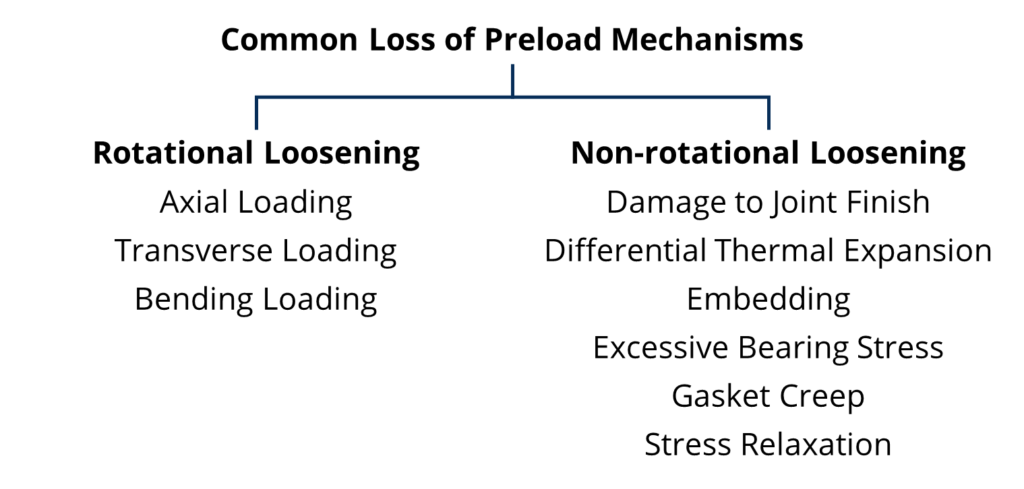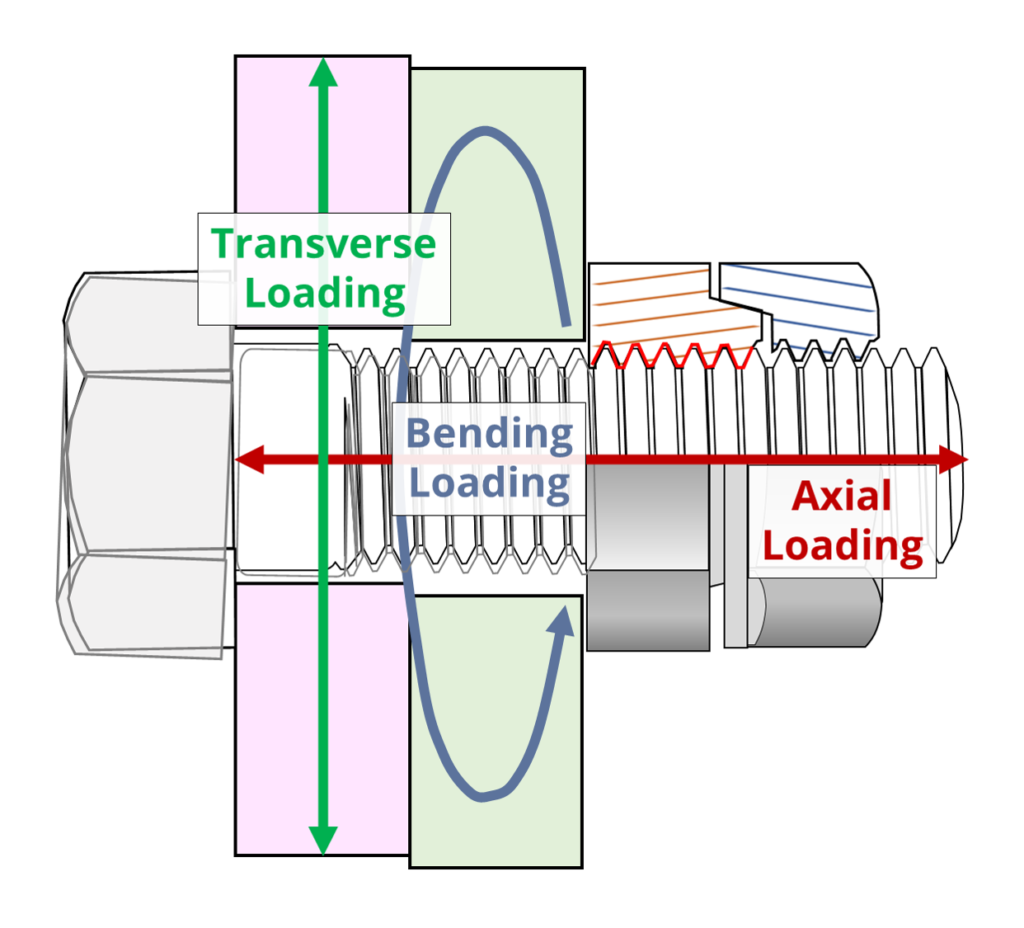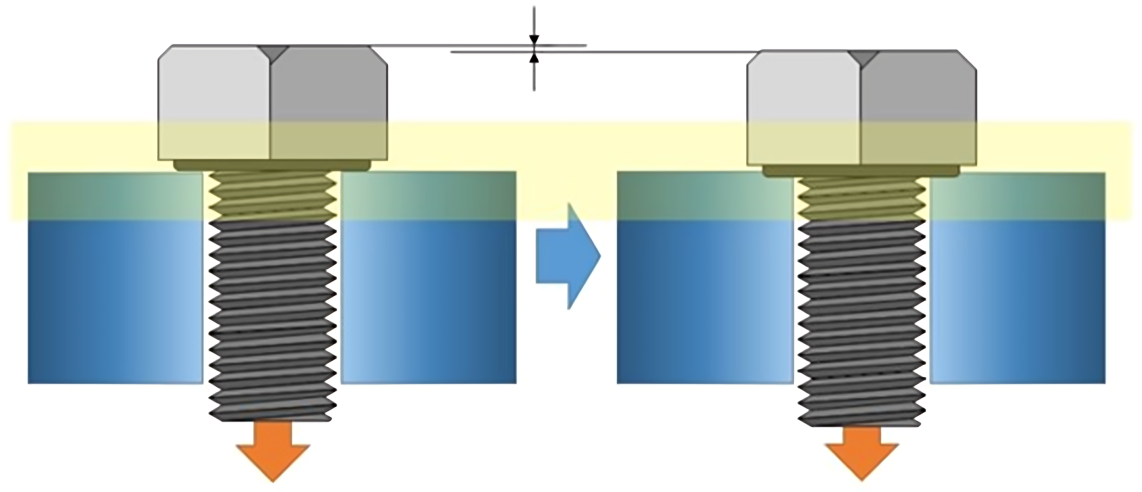Why do Bolts/Nuts Come Loose? Factors Influencing Bolt Preload Loss
When a bolted joint becomes loose, it is due to a reduction in the tension applied to the bolt during installation, referred to as “preload.” Preload generates the clamping force essential for securing the joint. However, preload may decrease for various reasons, resulting in loosening.
Types of Loosening

Two primary types of loosening can occur in bolted joints: “rotational loosening” (also known as “spontaneous bolt loosening”) and “non-rotational loosening” (also referred to as “slackening”).
Rotational loosening occurs when the nut rotates relative to the bolt, reducing preload. Non-rotational loosening occurs when the nut remains stationary relative to the bolt, but preload is still lost due to other factors
Rotational Loosening

Rotational loosening is caused by three main loading modes:
Axial Loading
“Axial loading,” also known as “tensile loading,” refers to forces applied along the bolt’s axis.
Transverse Loading
“Transverse loading,” also referred to as “shear loading,” describes forces applied perpendicular to the bolt’s axis. These forces pose significant risks to bolted joints, often leading to loosening or failure.
Bending Loading
“Bending loading” refers to the simultaneous application of axial and transverse loads on a fastener, causing the bolt to bend.
Non-rotational Loosening
Six common non-rotational loosening mechanisms lead to preload loss:
Damage to Joint Finish
When the finish or paint on a joint surface deteriorates or corrodes after installation, gaps can form beneath the nut or bolt head, reducing preload. This issue is especially common with thick coatings, such as hot-dipped galvanized coatings, especially when used with locking devices relying on increased bearing surface friction.
Differential Thermal Expansion
When fastener components (e.g., bolts, nuts, washers) and joint materials are made of different materials, they exhibit varying thermal expansion rates. Significant temperature changes cause them to expand and contract differently, potentially damaging fasteners and joint surfaces, which reduces preload.
Embedding

Embedding refers to localized plastic deformation beneath the bolt head, nut-bearing surface, threads, or joint surfaces. This flattening of surface asperities creates gaps, leading to preload loss. Embedding is inevitable and impossible to eliminate entirely, but methods exist to minimize its effects.
Excessive Bearing Stress

“Excessive bearing stress” occurs when the stress exerted by the clamp load causes the joint surface to collapse.
Gasket Creep
Creep refers to a material’s tendency to plastically deform under constant stress. In bolted joints, “gasket creep” is a common issue, especially in gaskets used for pipe flange joints.
Stress Relaxation
“Stress relaxation” is a type of creep that occurs when the tension within a bolt (i.e., preload) gradually decreases over time, typically under elevated temperatures.
Dangers of Low Preload

When preload decreases, a bolt’s fatigue life significantly shortens due to the higher proportion of mechanical force the bolt must bear.
The HARDLOCK Nut incorporates an internal wedging mechanism, effectively preventing preload loss from rotational loosening and reducing the impact of some non-rotational loosening mechanisms.
 Chinese
Chinese Korean
Korean Japanese
Japanese